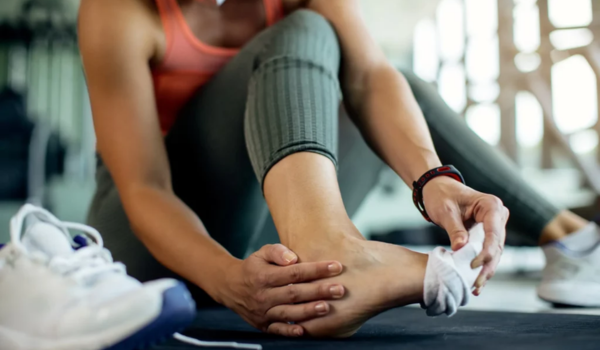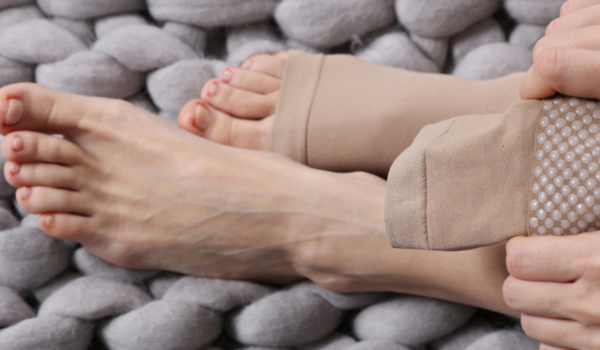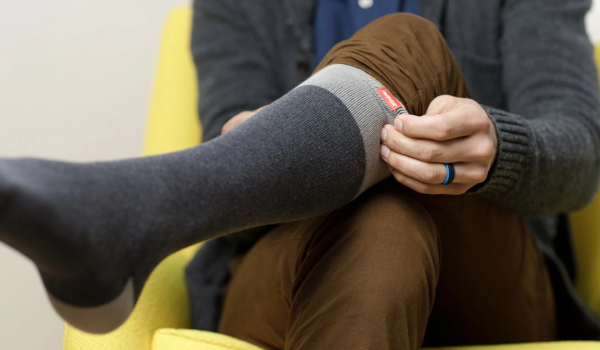The Best Compression Socks for Varicose Veins | Relief & Support
The Best Compression Socks for Varicose Veins: A Comprehensive Guide

Varicose veins are more than just a cosmetic concern; they can cause discomfort, pain, and even lead to more serious health issues if left untreated.
One of the most effective non-invasive treatments for varicose veins is the use of compression socks.
These specialized garments apply graduated pressure to the legs, improving blood circulation and alleviating symptoms associated with varicose veins.
In this comprehensive guide, we’ll explore the best compression socks for varicose veins, how to choose the right pair, and how they can help you manage this condition effectively.
Understanding Varicose Veins
Before diving into the specifics of compression socks, it’s essential to understand what varicose veins are and how they affect the body.
What Are Varicose Veins?
Varicose veins are swollen, twisted veins that are visible just under the surface of the skin. They most commonly occur in the legs and feet due to prolonged standing or sitting, pregnancy, obesity, or a family history of vein problems.
While they are often harmless, they can cause symptoms such as:
- Pain or aching in the affected area
- Swelling of the feet and ankles
- Heaviness or fatigue in the legs
- Itching around one or more of the veins
- Skin discoloration near the affected veins
If left untreated, varicose veins can lead to complications like ulcers, blood clots, or bleeding.
How Compression Socks Help?
Compression socks are designed to apply pressure to the lower legs, which can help:
- Improve blood circulation: By applying graduated pressure, compression socks help blood flow more efficiently back to the heart.
- Reduce swelling: They help prevent fluid from accumulating in the legs and feet.
- Alleviate pain and discomfort: By supporting the veins and reducing swelling, compression socks can ease the pain associated with varicose veins.
- Prevent the progression of varicose veins: Regular use can prevent the condition from worsening over time.
Choosing the Right Compression Socks
When selecting compression socks for varicose veins, consider the following factors:
1. Compression Level (mmHg)
Compression socks come in various pressure levels, measured in millimeters of mercury (mmHg). The appropriate level depends on the severity of your condition:
- 8-15 mmHg: Mild compression for minor swelling and fatigue.
- 15-20 mmHg: Moderate compression for mild varicose veins and to prevent blood clots.
- 20-30 mmHg: Firm compression for more severe varicose veins, deep vein thrombosis, and post-surgical use.
- 30-40 mmHg: Extra firm compression for advanced venous diseases and severe cases of venous insufficiency.
- 40-50 mmHg: Used in the treatment of chronic venous insufficiency and severe cases of deep vein thrombosis.
2. Material and Comfort
- Look for socks made from breathable materials like cotton, nylon, and spandex blends. These materials provide comfort for all-day wear and help keep your legs cool and dry.
3. Style and Fit
- Compression socks come in various styles, including knee-high, thigh-high, and full-leg stockings.
- Choose a style that suits your needs and preferences. Ensure the socks fit properly; they should be snug but not painfully tight.
4. Medical Grade vs. Over-the-Counter
- Medical-grade compression socks are prescribed by healthcare professionals and are often more durable and effective.
- Over-the-counter options are available without a prescription and come in standard sizes and compression levels, suitable for mild cases of varicose veins and general preventive use.

Top Compression Socks for Varicose Veins
Based on expert reviews and customer feedback, here are some of the best compression socks for varicose veins:
1. CEP Compression Socks
CEP compression socks use graduated compression technology to enhance blood circulation.
They apply the highest pressure at the ankle, which gradually decreases up the leg, helping to prevent and manage symptoms of varicose veins.
Known for their performance-driven design, CEP socks are a favorite among athletes and fitness enthusiasts.
2. Sigvaris Compression Socks
Sigvaris compression socks offer accurate graduated compression to enhance blood circulation and reduce symptoms like swelling and discomfort.
Their medical-grade compression levels are available in various styles, ensuring you get the necessary support for both daily activities and more severe venous conditions.
3. Jobst Compression Socks
Jobst compression socks use gradient compression to improve leg health, applying maximum pressure at the ankle and reducing as it moves up the leg to enhance circulation and reduce swelling.
Their range caters to various needs, from daily wear to specific medical conditions, effectively alleviating discomfort from varicose veins.
4. Juzo Compression Socks
Juzo compression socks are designed to help manage poor blood flow that can lead to venous issues like tired, achy legs and chronic swelling.
Their products provide graduated compression and are available in a variety of styles, ensuring continued participation in life’s routines.
5. Sockwell Lifestyle Firm Compression Socks
Sockwell’s Lifestyle Firm Compression Socks are made from a merino/bamboo blend, offering both style and functionality.
The natural fibers provide breathability and comfort, making them ideal for everyday wear. They offer firm compression, which is beneficial for managing varicose veins.
6. Comrad Compression Socks
Comrad’s compression socks feature a stretchy cotton-nylon blend that ensures comfort and modern styling.
The graduated compression design helps promote blood circulation and reduce leg fatigue, making them suitable for both men and women.
7. Dr. Segal’s Compression Socks
Dr. Segal’s Compression Socks are known for their comfort and ease of use.
They are notably easy to pull on and off, making them a popular choice among seniors and others with limited mobility. These socks provide a balanced blend of support and comfort.
Additional Tips for Managing Varicose Veins
In addition to wearing compression socks, consider the following lifestyle changes to help manage varicose veins:
- Exercise regularly: Activities like walking, swimming, or cycling can improve circulation and strengthen the legs.
- Elevate your legs: When resting, elevate your legs above heart level to reduce swelling.
- Maintain a healthy weight: Excess weight can put additional pressure on your veins.
- Avoid prolonged standing or sitting: Take breaks to move around and stretch your legs.
- Wear comfortable shoes: Avoid high heels and choose shoes that provide good support.
Frequently Asked Questions (FAQ)
1. Can compression socks cure varicose veins?
Compression socks do not cure varicose veins, but they are one of the most effective non-surgical ways to manage symptoms like swelling, pain, and fatigue. They can also help prevent the condition from worsening.
2. How long should I wear compression socks each day?
It’s generally recommended to wear them during the day and remove them before bed. If you have a more severe condition, your doctor might recommend wearing them longer.
3. Do I need a prescription?
Compression socks under 20 mmHg can typically be purchased over the counter. For 20-30 mmHg or higher, it’s wise to consult your physician, especially if you have underlying health conditions like peripheral artery disease or diabetes.
4. How do I know my size?
Proper sizing is crucial for effectiveness and comfort. Measure your ankle circumference, calf circumference, and leg length. Use SaulMD’s detailed size guide or reach out to our support team for help.
5. How long do compression socks last?
Most compression socks retain their effectiveness for about 4–6 months with regular use and proper care. Replace them once they start to feel loose or show signs of wear.
How to Wear and Care for Compression Socks?
Washing and Maintenance Tips
- Hand wash or machine wash on a delicate cycle in cold water.
- Use mild detergent and avoid bleach or fabric softener.
- Air dry flat or hang dry; avoid tumble drying to preserve elasticity.
Wearing Tips
- Put them on first thing in the morning when swelling is minimal.
- Use donning aids or gloves if you struggle to pull them up.
- Avoid folding or rolling the tops this can impair circulation.

Why Early Intervention Matters?
Varicose veins are progressive they tend to get worse over time without proper treatment. Early intervention with compression socks can:
- Slow or halt progression
- Prevent complications like ulcers or blood clots
- Preserve mobility and quality of life
- Reduce the need for surgical procedures
If you’re seeing the early signs of visible veins, swelling, discomfort it’s wise to act now. The right pair of compression socks could make all the difference.
Conclusion
Compression socks are a proven, non-invasive way to manage varicose veins and improve circulation.
By applying graduated pressure, they help reduce pain, swelling, and leg fatigue while supporting vein health.
Ideal for daily use, travel, pregnancy, or standing for long periods, they offer comfort and relief without the need for medication or surgery. Choosing the right compression level and fit is essential for maximum benefit.
Whether you’re just starting to notice symptoms or managing a chronic condition, compression socks can make a noticeable difference in your leg health and quality of life.
.